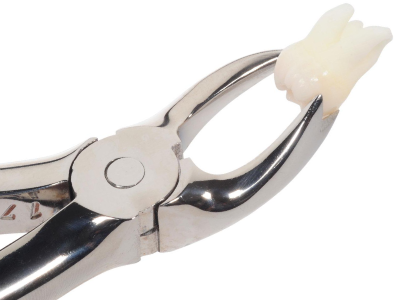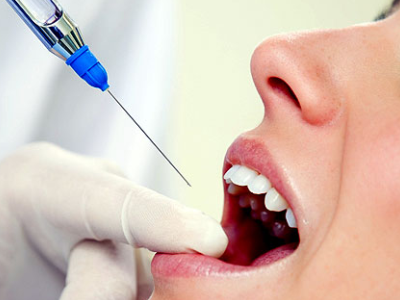Tooth extraction

Reasons for extracting teeth
Although permanent teeth can last a lifetime, teeth that have become damaged or decayed may need to be removed or extracted.
Other reasons include:
A crowded mouth. Sometimes dentists extract teeth to prepare the mouth for orthodontics. The goal of orthodontics is to properly align the teeth, which may not be possible if your teeth are too big for your mouth. Likewise, if a tooth cannot break through the gum (erupt) because there is not room in the mouth for it, your dentist may recommend extraction.
Infection. If tooth decay or damage extends to the pulp — the centre of the tooth containing nerves and blood vessels — bacteria in the mouth can enter the pulp, leading to infection. If infection is so severe that antibiotics do not cure it, extraction may be needed to prevent the spread of infection.
Risk of infection. If your immune system is compromised (for example, if you are receiving chemotherapy or are having an organ transplant) even the risk of infection in a particular tooth may be reason to remove the tooth.
Gum disease. If periodontal disease — an infection of the tissues and bones that surround and support the teeth — have caused loosening of the teeth, it may be necessary to extract the tooth or teeth.
 What to expect with tooth extraction
What to expect with tooth extraction
Dentists and oral surgeons (dentists with special training to perform surgery) perform tooth extractions. Before removing the tooth, your dentist will give you an injection of a local anaesthetic (or pain medicine) to numb the area where the tooth will be removed. If you are having more than one tooth extracted or a tooth is impacted, your dentist may use a general anaesthetic, this will prevent pain throughout your body and make you sleep through the procedure.
If the tooth is impacted, the dentist will cut away gum and bone tissue that cover the tooth and then, using forceps, grasp the tooth and gently rock it back and forth to loosen it from the jaw bone and ligaments that hold it in place. Sometimes, a tooth that is difficult to remove must be taken out in pieces.
Once the tooth has been extracted, a blood clot usually forms in the socket. The dentist will pack a gauze pad into the socket and get you to bite down on it to help stop the bleeding. Sometimes the dentist will place a few stitches — usually self-dissolving — to close the gum edges over the extraction site.
Sometimes, the blood clot in the socket breaks loose, exposing the socket – causing a painful condition called dry socket. If this happens, your dentist will probably place a special dressing over the socket for a few days to protect it as a new clot forms.
What to tell your dentist before you have a tooth extracted
Although having a tooth out is usually very safe, the procedure can allow harmful bacteria into the bloodstream. Gum tissue is also at risk of infection. If you have a condition that puts you at high risk of developing a severe infection, you may need to take antibiotics before and after the extraction. Before having a tooth removed, let your dentist know your complete medical history, the medications and supplements you take, and if you have one of the following:
- Damaged or man-made heart valves
- A congenital heart defect
- An impaired immune system
- Liver disease (cirrhosis)
- An artificial joint, such as a hip replacement
- A history of bacterial endocarditis
After you’ve had a tooth extracted
Following an extraction, your dentist will send you home to recover. Recovery typically takes a few days. The following can help minimise discomfort, reduce the risk of infection and speed recovery.
- Take painkillers as prescribed or over the counter products suggested by your dentist – such as ibuprofen, aspirin or paracetamol.
- Bite firmly but gently on the gauze pad placed by your dentist to reduce bleeding and allow a clot to form in the tooth socket. Follow your dentist’s advice about how long to leave the pad in place after the extraction and what to do if the gauze pad becomes soaked with blood.
- Apply an ice bag to the affected area immediately after the procedure to keep down swelling. Apply ice for 10 minutes at a time. Ask your dentist about how to do this safely.
- Avoid rinsing or spitting for six hours after the extraction to avoid dislodging the clot that forms in the socket.
- After six hours, gently rinse your mouth with a solution made of half a teaspoon of salt in a glass of warm water.
- Do not drink from a straw for the first 24 hours.
- Do not smoke, as it can inhibit healing.
- Eat softer foods (such as soup or yoghurt) the day after the extraction. Gradually add solid foods to your diet as the extraction site heals.
- When lying down, prop your head up with pillows. Lying flat may prolong bleeding.
- Continue to brush and floss your teeth, and brush your tongue, but avoid the extraction site. Doing so will help prevent infection.
